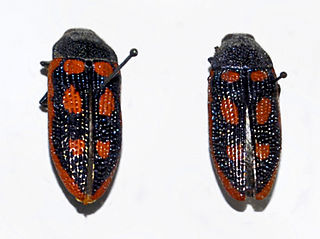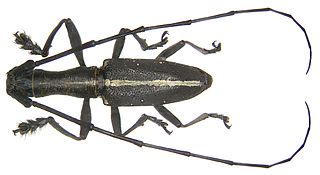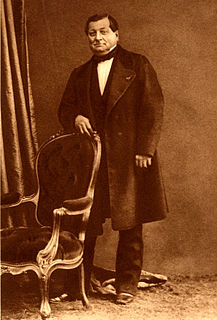
Cape Le Grand National Park is a national park in Western Australia, 631 km (392 mi) south-east of Perth and 56 km (35 mi) east of Esperance. The park covers an area of 31,801 hectares The area is an ancient landscape which has been above sea level for well over 200 million years and remained unglaciated. As a result, the area is home to many primitive relict species. Established in 1966, the park is managed by the Department of Parks and Wildlife. The name Le Grand is from one of the officers on L'Espérance, one of the ships in the 1792 expedition of Bruni d'Entrecasteaux.

Harmonia is a genus of lady beetles belonging to the subfamily Coccinellinae.

Banksia serrata, commonly known as old man banksia, saw banksia, saw-tooth banksia and red honeysuckle, is a species of woody shrub or tree of the genus Banksia in the family Proteaceae. Native to the east coast of Australia, it is found from Queensland to Victoria with outlying populations on Tasmania and Flinders Island. Commonly growing as a gnarled tree up to 16 m (50 ft) in height, it can be much smaller in more exposed areas. This Banksia species has wrinkled grey bark, shiny dark green serrated leaves and large yellow or greyish-yellow flower spikes appearing over summer. The flower spikes, or inflorescences, turn grey as they age and pollinated flowers develop into large, grey, woody seed pods called follicles.

Banksia marginata, commonly known as the silver banksia, is a species of tree or woody shrub in the plant genus Banksia found throughout much of southeastern Australia. It ranges from the Eyre Peninsula in South Australia, to north of Armidale, New South Wales, and across Tasmania and the islands of Bass Strait. It grows in various habitats, including Eucalyptus forest, scrub, heathland and moorland. Banksia marginata varies widely in habit, ranging from a small shrub, 20 cm (7.9 in) high, to a large tree, 12 m (40 ft) tall. The narrow leaves are linear and the yellow inflorescences occur from late summer to early winter. The flower spikes fade to brown and then grey and develop woody follicles bearing the winged seeds. Originally described by Antonio José Cavanilles in 1800, further collections of B. marginata were described as several separate species by Robert Brown in 1810. However, all were reclassified as a single species by George Bentham in 1870. No distinct subspecies have been recognised by Banksia expert Alex George, who nonetheless concedes that further work is needed.

Paropsis is a genus of Chrysomelidae, commonly referred to as tortoise beetles, which includes over 70 described species. Their small size, bright colours and patterns, and roughly hemispherical shape cause them to be mistaken for beetles in the family Coccinellidae (ladybirds). They are distributed across Australia, New Zealand and Papua New Guinea. They primarily feed on Eucalyptus but there are a few that feed on Baeckea, Kunzea and Leptospermum. Species within this genus are noted as pests. For example, Paropsis charybdis is a pest of Eucalyptus in New Zealand.
Cyrioides is a genus of beetles in the family Buprestidae, containing the following species:

Stigmodera is a genus of beetles in the family Buprestidae, the jewel beetles. It is a large genus that some authors divide into three separate genera. Others keep them together, making Stigmodera a genus of some 550 species. Most are native to Australia and a few occur in New Guinea.

Cyrioides imperialis, commonly known as the banksia jewel beetle, is a species of beetle in the family Buprestidae native to southeastern Australia. The Danish naturalist Johan Christian Fabricius was the first to describe it in 1801, and it still bears its original name.
Cyrioides vittigera, commonly known as the striped banksia jewel beetle, is a species of beetle in the family Buprestidae native to Western Australia. It was described by the French naturalists Francis de Laporte de Castelnau and Hippolyte Louis Gory in 1835.
Cyrioides elateroides is a species of beetle in the family Buprestidae native to southwest Western Australia. It was described by the English entomologist Edward Saunders in 1872, the type specimen collected along the Swan River. Saunders noted it to be similar in coloration to the related C. vittigera but had its markings were patterned differently.

Acalolepta australis is a species of flat-faced longhorns beetle belonging to the family Cerambycidae, subfamily Lamiinae.
Catadromus is a genus of beetles in the family Carabidae, containing the following species:
Ancita is a genus of longhorn beetles of the subfamily Lamiinae, containing the following species:

Gnoma is a genus of longhorn beetles of the subfamily Lamiinae, containing the following species:
Ancita australis is a species of beetle in the family Cerambycidae. It was described by Jean Baptiste Boisduval in 1835. It is known from Australia.
Rhytiphora pulverulea is a species of beetle in the family Cerambycidae. It was described by Jean Baptiste Boisduval in 1835. It is known from Australia.
Disternopsis pruinosa is a species of beetle in the family Cerambycidae. It was described by Jean Baptiste Boisduval in 1835. It is known from Australia.
Anoplognathus boisduvalii is a beetle of the family Scarabaeidae native to eastern Australia.

Orcus is a genus of lady beetles in the family Coccinellidae. There are at least 18 described species in Orcus, found in Australia, New Guinae, New Caledonia, Java, Sumba, New Guinea, and the Key Islands.
Agetinus is a genus of leaf beetles in the subfamily Eumolpinae. It is known from Australia. The genus was originally named Agetus by Félicien Chapuis in 1874. However, the name Agetus was preoccupied by Agetus Kröyer, 1849, so the genus was renamed to Agetinus by Édouard Lefèvre in 1885.












